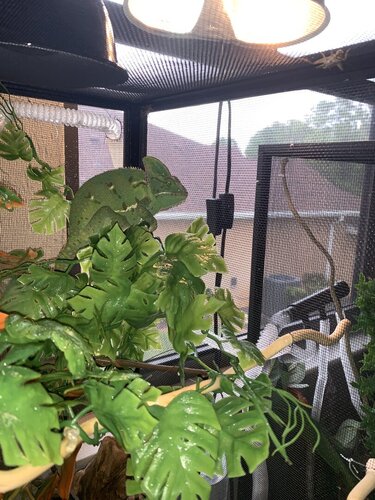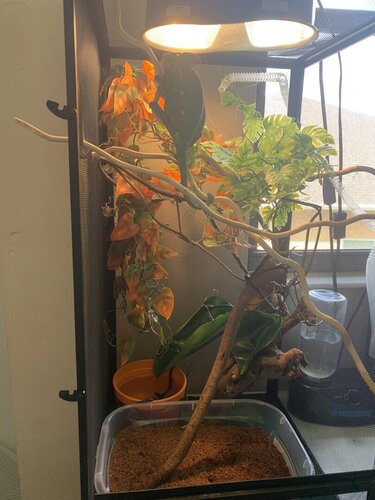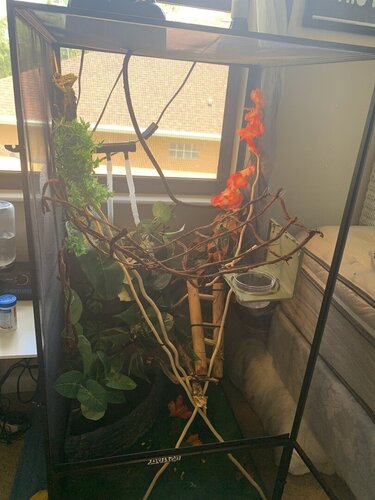Allisonb74
New Member
I have a male and female veiled chameleon and I’m worried that my female might be egg bound. So I set up an appointment with the best reptile vet I could find and I was wondering if anyone could give me a few pointers. I’ve never worked with females before, I also including a picture of my female.








